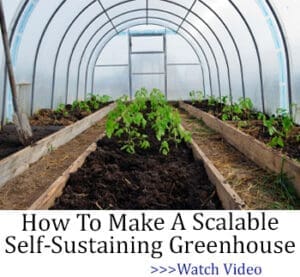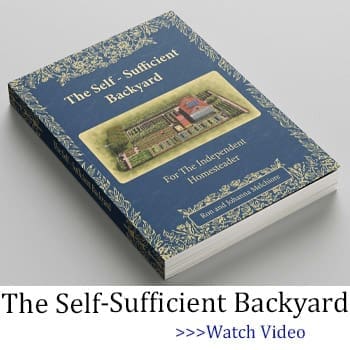If you’ve ever stepped into a greenhouse on a cold morning, you’ve felt the quiet miracle it holds. The frost may linger outside, but inside, the air is gentle and alive. The greenhouse isn’t just a structure of glass or plastic; it’s a living balance between sunlight, soil, and shelter. It captures what nature gives and turns it into abundance.
Understanding how a greenhouse works is more than science. It’s about learning how to harmonize with the rhythms of the earth, how to grow food and medicine even when the weather says otherwise.
A greenhouse is a promise of continuity. It allows you to bridge the gap between seasons, nurturing life when the rest of the world lies dormant. This steady cycle reminds us that nature doesn’t stop working just because the temperature drops; it simply changes its pace, waiting for those who know how to listen and adapt.
Capturing and Holding Sunlight
At its core, a greenhouse works by trapping the sun’s energy. Sunlight passes through the transparent walls and roof, warming the air, plants, and soil inside. That heat becomes trapped because the glass or plastic panels slow its escape. This creates a microclimate that can stay many degrees warmer than the air outside, even in the dead of winter.
Plants thrive under this natural cycle. The light feeds photosynthesis, and the consistent warmth keeps roots active and soil fertile. In older times, gardeners used simple glass houses and cold frames to extend their harvest long before electricity or artificial lights existed. What mattered wasn’t the technology but the placement, always facing south and welcoming the first rays of dawn.
Related: DIY Outdoor Mini Greenhouse For Year-Round Vegetables
You can think of a greenhouse as a vessel for sunlight. It doesn’t create energy; it preserves it. The clearer and better insulated the structure, the longer it can hold that precious warmth through the night, when the outside world cools and frost creeps in.
Over time, small adjustments can make a big difference. Painting surfaces inside a darker color, adding reflective panels, or arranging water barrels near sunny walls helps capture and release more warmth. These little choices accumulate, turning a basic structure into an efficient, self-sustaining haven for plants.
The Dance Between Air, Moisture, and Soil
Inside a greenhouse, everything is connected. When warm air meets cooler surfaces, moisture condenses and falls back as gentle dew. This cycle keeps humidity high, which many plants love. It also helps reduce water waste, as very little escapes into the air.
The soil inside a greenhouse plays a quiet but vital role. It absorbs heat during the day and releases it slowly at night, balancing temperature swings. The richer the soil, the better it holds warmth and moisture. Even the placement of paths, containers, and water barrels can change how the air moves and where the heat settles.
The challenge is maintaining that balance. Too much humidity can encourage mold or pests, while too little can dry the leaves and roots. Seasoned gardeners learn to read the air the same way sailors read the wind, adjusting vents, opening doors, and trusting intuition as much as instruments.
Related: How to Make Sun Dried Tomatoes
A living greenhouse needs air movement to stay healthy. Simple vents at the roof and base create natural airflow, allowing warm air to rise and cooler air to enter. This circulation prevents stagnation and keeps plants strong, proving that the best systems often rely on nature’s own logic, not complicated machinery.
The Greenhouse as a Living Ecosystem
A well-tended greenhouse is more than a structure; it’s an ecosystem. Beneficial insects find shelter there, pollinating flowers and keeping pests in check. Worms work quietly in the soil, breaking down organic matter into nutrients. Even the smallest details, like planting herbs near vegetables, can influence the air chemistry and deter harmful bugs.
Traditional gardeners often planted medicinal herbs alongside vegetables. They understood that a healthy garden mirrors a healthy body, both thrive when balanced and cared for. Lavender, thyme, and calendula are not just beautiful; they help purify the air, repel pests, and attract pollinators.
Over time, a greenhouse begins to develop its own character. Each layer of soil becomes more fertile, each season teaches lessons about airflow, sunlight, and timing. It’s a partnership with nature rather than control over it, and that’s why it endures when more artificial systems fail.
You might even notice how your greenhouse develops a distinct scent and rhythm over the years. That mixture of earth, humidity, and growth becomes part of your life, a reminder that true cultivation is as much about patience and observation as it is about planting seeds.
Why Greenhouses Still Matter Today
Modern gardening often leans on technology, from grow lights to electric heaters and automated watering systems. Yet, a traditional greenhouse proves that the best designs are often the simplest. When you understand how a greenhouse truly works, you realize it needs only sunlight, water, and care.
In uncertain times, the greenhouse is more than a hobby space. It’s a sanctuary of resilience. It allows you to grow food and medicine when the seasons shift or supplies run low. It reminds us that even small structures can provide immense security when designed in harmony with the natural world.
And it’s this same spirit of natural self-sufficiency that inspired The Forgotten Home Apothecary, a complete guide to using the plants around you for healing and health. Inside, you’ll rediscover herbal recipes and remedies that have been passed down for generations, perfectly suited for anyone who values nature’s quiet power.
👉 Explore The Forgotten Home Apothecary here
If you’re ready to bring that wisdom into your own backyard, The Medicinal Garden Kit offers a simple, beautiful way to grow your own pharmacy at home. With carefully selected seeds and guidance for each plant, it’s the perfect addition to any greenhouse or garden.
👉 Get your Medicinal Garden Kit here
Today, returning to natural methods is more than nostalgia; it’s preparation. A greenhouse filled with edible and medicinal plants offers independence, health, and peace of mind no machine can replace.
Final Thoughts
So, how does a greenhouse work? It works because nature always keeps its promises. Light becomes warmth, warmth becomes life, and life feeds back into the earth.
When you walk inside and feel the gentle humidity, smell the rich soil, and see green leaves pushing against the glass, you’re witnessing a quiet truth that nature, when protected and respected, always provides.
The greenhouse is more than a tool for growing plants. It’s a lesson in patience, balance, and self-reliance, a reminder that the simplest systems are often the most powerful.
In tending a greenhouse, you are tending your own connection to nature’s endless rhythm. Each sunrise that filters through the glass is an invitation to trust in the earth again, to remember that every bit of warmth and light has a purpose if we learn how to hold onto it.
How Big a Greenhouse Do I Need?
Even If You Have a Water Stockpile, You Need to Learn This (Video)
How to Heat a Greenhouse Without Electricity














